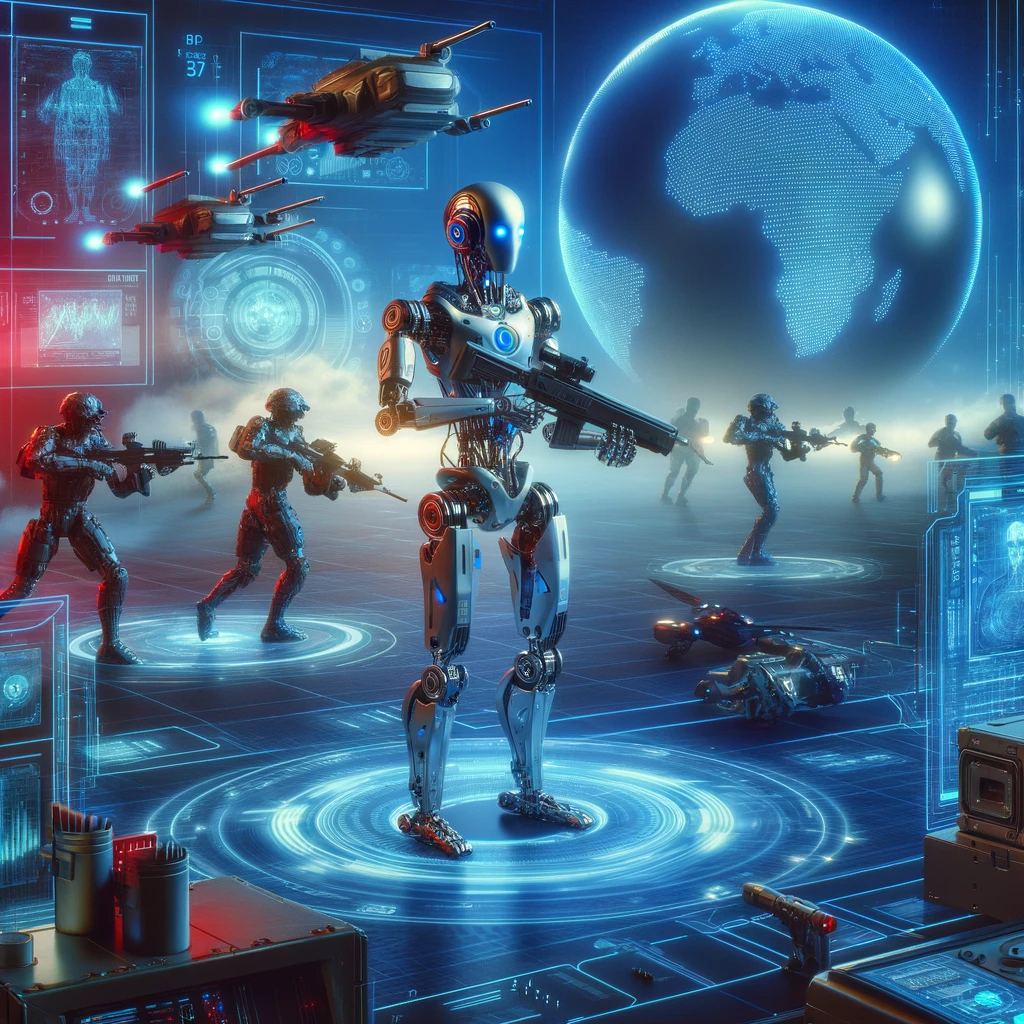 Introduction
Introduction
Artificial intelligence (AI) and robotics are revolutionizing military operations worldwide. From autonomous drones to AI-powered cyber defense systems, these technologies are enhancing the effectiveness, efficiency, and precision of military forces. As the global arms race shifts towards smart warfare, countries are investing heavily in AI-driven military innovations. This article explores the role of AI and robotics in modern military applications, discussing their benefits, challenges, and ethical implications.
AI-Powered Autonomous Weapons
One of the most significant applications of AI in the military is autonomous weapon systems (AWS). These weapons, often referred to as “killer robots,” can identify and engage targets without direct human intervention. Examples include:
- Lethal Autonomous Weapons Systems (LAWS): These AI-driven combat systems use machine learning algorithms to detect, track, and eliminate enemy targets autonomously. (Source)
- Autonomous Drones: Countries like the United States, China, and Russia are deploying AI-powered drones capable of conducting reconnaissance, surveillance, and combat operations without human guidance. (Source)
- Unmanned Ground Vehicles (UGVs): These robotic systems are designed to perform logistics, surveillance, and combat tasks on the battlefield. (Source)
While AWS offers operational advantages, concerns about accountability and the potential for unintended escalations remain significant challenges.
AI in Cyber Warfare
Cyber warfare is an emerging battlefield where AI plays a crucial role. Military organizations leverage AI to enhance cybersecurity in the following ways:
- Threat Detection: AI algorithms analyze vast amounts of data to identify and mitigate cyber threats in real time. (Source)
- Automated Defense Systems: AI-driven security protocols can autonomously detect and neutralize malware, phishing attacks, and cyber intrusions. (Source)
- Offensive Cyber Operations: Militaries develop AI-powered hacking tools to disrupt enemy communication networks and infrastructure. (Source)
AI-driven cybersecurity is vital for modern defense strategies, ensuring that national security remains intact against cyber threats.
Robotics in Military Logistics and Support
Apart from combat roles, robotics significantly contributes to military logistics, support, and medical assistance:
- Autonomous Supply Chains: AI-powered robots manage logistics, transport supplies, and ensure operational efficiency in conflict zones. (Source)
- Medical Assistance Robots: Robotic surgical systems and autonomous evacuation units aid in battlefield medical treatments, reducing casualty rates. (Source)
- Explosive Ordnance Disposal (EOD) Robots: These robots are used to detect and neutralize landmines and improvised explosive devices (IEDs), safeguarding human lives. (Source)
These innovations improve mission success rates while reducing risks to human soldiers.
AI in Strategic Decision-Making
AI is increasingly being used for strategic decision-making in military operations:
- Data Analysis & Predictive Modeling: AI analyzes large datasets to provide predictive insights into enemy movements and battlefield conditions. (Source)
- AI-Powered Command Centers: Intelligent systems assist military commanders in optimizing battlefield strategies and logistics. (Source)
- Wargaming Simulations: AI-driven simulations allow military planners to test different war scenarios and prepare for various contingencies. (Source)
These applications enhance decision-making capabilities, allowing for more precise and efficient military operations.
Ethical and Legal Challenges
The integration of AI and robotics in military applications presents ethical and legal dilemmas:
- Autonomy vs. Human Control: Should autonomous weapons operate without human oversight? (Source)
- Accountability in AI Warfare: If an AI-driven weapon makes a mistake, who is responsible? (Source)
- International Regulations: The global community debates over restrictions and treaties regarding autonomous weapon systems. (Source)
Organizations like the United Nations advocate for international regulations to ensure AI warfare adheres to ethical principles.
Future of AI and Robotics in Military
As AI and robotics continue to evolve, the future of military warfare will witness further advancements:
- Swarm Robotics: AI-powered drone swarms capable of executing coordinated attacks. (Source)
- Quantum AI in Military: Quantum computing will enhance cryptography and data processing capabilities. (Source)
- Human-AI Collaboration: Augmented soldiers with AI-enhanced decision-making capabilities. (Source)
These developments indicate that AI and robotics will play an even more significant role in shaping future military strategies.
Conclusion
AI and robotics are transforming military operations, offering enhanced efficiency, reduced risks, and superior strategic capabilities. However, these technologies also raise ethical and legal concerns that require careful consideration. As nations continue to invest in AI-driven defense systems, the balance between innovation and regulation will determine the future of AI in warfare.
For more insights into AI and defense technology, visit MindVerseHub.
